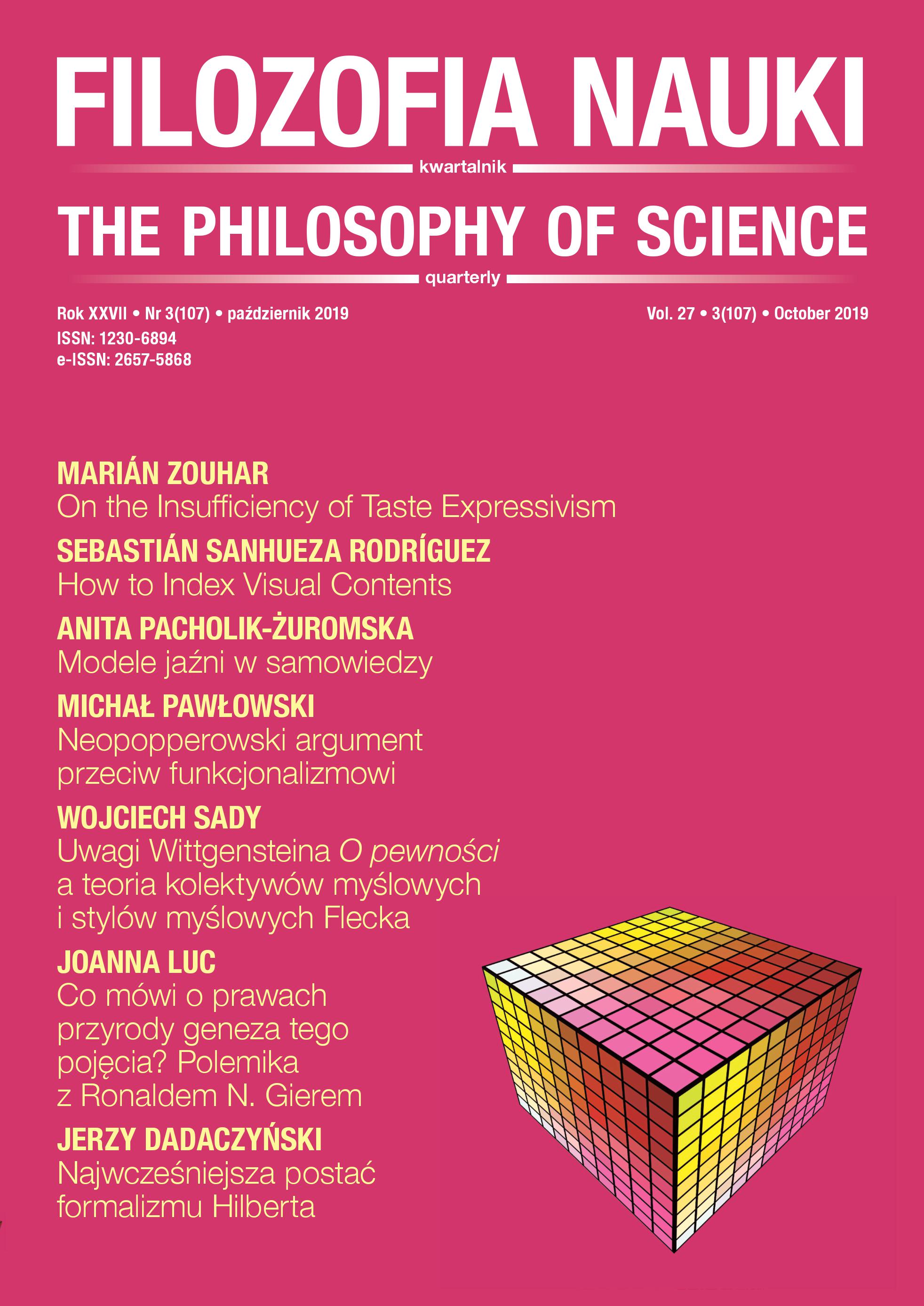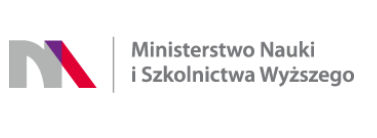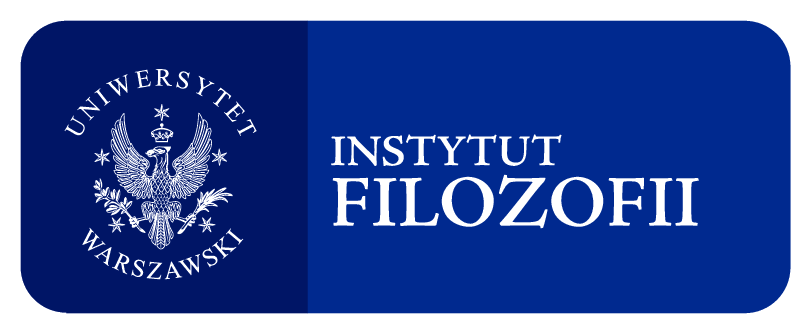Najwcześniejsza postać formalizmu Hilberta
DOI:
https://doi.org/10.14394/filnau.2019.0021Słowa kluczowe:
Hilbert, Brouwer, matematyka, formaliz, formalizacja, metamatematyka, dowód, dowód niesprzeczności, logiczne podstawy klasycznej matematykiAbstrakt
The aim of this paper is to describe and analyze the first (1922) of a long series of Hilbert’s works in which he presented the mature version of formalism. His formalism in 1922 can be called mature because it is characterized by an explicit introduction of metamathematics. Hilbert distinguishes several levels of mathematics (not just two, as one may think — formalized mathematics and metamathematics): the level of meaningless arithmetical signs, labelled I-Z in this paper, the level of arithmetic with content (inhaltliche Arithmetik), II-T, which describes signs from level I-Z, the level of formalized mathematics, II-F (Hilbert postulated a full formalization of mathematics), and the level of metamathematics with content, III-MM, which describes signs from level II-F. Hilbert emphasized that the relation of III-MM to II-F is the same as the relation of II-T to I-Z (description, investigation). In this way, he tried to characterize metamathematics. He expected that in III-MM a consistency proof of II-F could be built, which was the aim of Hilbert’s formalism. This paper discusses Hilbert’s first proof of an auxiliary metamathematical theorem. It is indicated that, on level III-MM, Hilbert assumed a part of arithmetic from level II-T and the classical logic. Although in 1922 he did not distinguish explicitly between the finite and infinite mathematics and between the real and ideal mathematics, such a division was implicit in his study. This allows us to assume that already in 1922 Hilbert had an idea of a finitistic consistency proof of infinitistic mathematics, announced a few years later. It appears, therefore, that already in 1922 he had a very clear idea of formalism, which was presented in detail in the middle of the decade. Hilbert was also aware in 1922 that Brouwer’s objections would eventually force him to explain the issue of logical foundations of classical mathematics.
Bibliografia
Dadaczyński J. (2018), O niektórych inspiracjach Hilbertowskiego programu formalizmu, „Filozofia Nauki” 26(3) [103], 99-112. https://doi.org/10.14394/filnau.2018.0019
Detlefsen M. (1986), Hilbert’s Program, Dordrecht: Reidel. https://doi.org/10.1007/978- 94-015-7731-1
Giaquinto M. (1983), Hilbert’s Philosophy of Mathematics, „British Journal for Philosophy of Science” 34(2), 119-132. https://doi.org/10.1093/bjps/34.2.119
Hilbert D. (1900), Über den Zahlbegriff, „Jahresbericht der Deutschen Mathematiker- Vereinigung” 8, 180-184.
Hilbert D. (1905), Über die Grundlagen der Logik und der Arithmetik [w:] Verhandlungen des 3. Internationalen Mathematiker-Kongresses in Heidelberg vom 8. bis 13. August 1904, A. Krazer (Hrsg.), Leipzig: Teubner, 174-185.
Hilbert D. (1922), Neubegründung der Mathematik. Erste Mitteilung, „Abhandlungen aus dem Mathematischen Seminar der Hamburger Universität” 1(1), 157-177. https:// doi.org/10.1007/BF02940589
Hilbert D. (1923), Die logischen Grundlagen der Arithmetik, „Mathematische Annalen” 88, 151-165.
Hilbert D. (1926), Über das Unendliche, „Mathematische Annalen” 95, 161-190. https://doi.org/10.1007/BF01206605
Jourdain Ph. (1904), On the Transfinite Cardinal Numbers of Well-Ordered Aggregates, „Philosophical Magazine” 7, 61-75. https://doi.org/10.1080/14786440409463088
Kreisel G. (1983), Hilbert’s Programme [w]: Philosophy of Mathematics, P. Benacerraf, H. Putnam (eds.), Cambridge: Cambridge University Press, 207-238.
Peckhaus V. (1990), Hilbertprogramm und Kritische Philosophie, Göttingen: Vandenhoeck und Ruprecht.
Sieg W. (2013), Hilbert’s Programs and Beyond, New York: Oxford University Press.



















 Filozofia Nauki | ISSN 1230-6894 | e-ISSN 2657-5868
Filozofia Nauki | ISSN 1230-6894 | e-ISSN 2657-5868